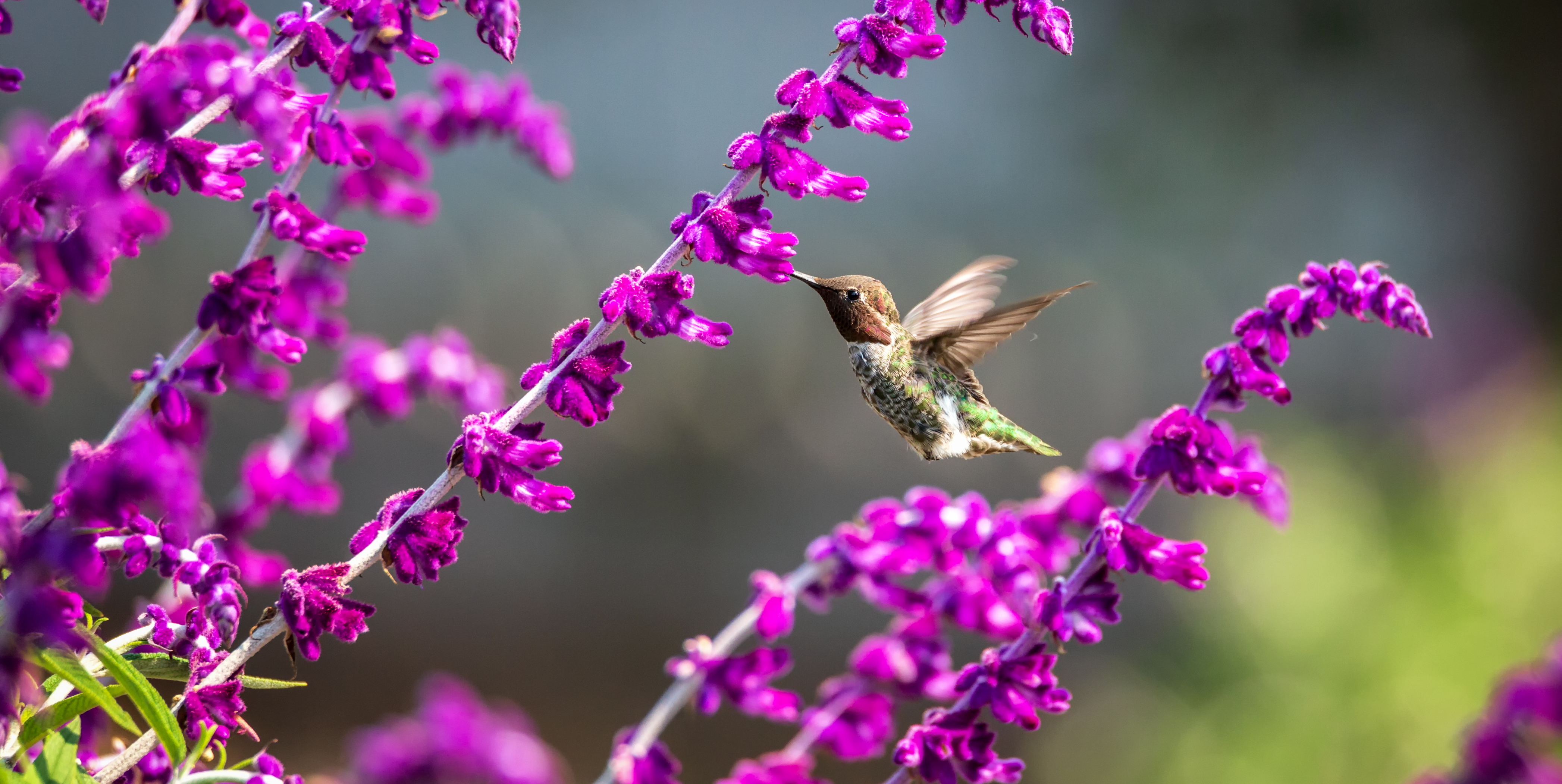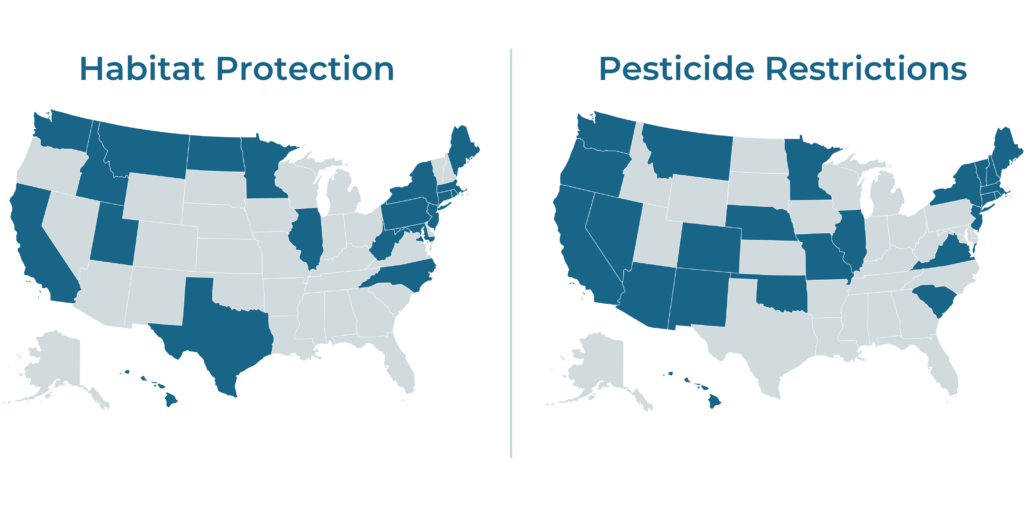
Policy Update
How Are U.S. States Improving Protections for Pollinator Species in 2023?
May 9, 2023
Overview
Pollinator species – such as bees, butterflies, and birds – continue to face population decline due to a range of factors, mainly habitat loss and the widespread use of toxic pesticides. As pollinator species decline at record rates, U.S. states are at the helm of the solutions to conserve and restore pollinators; in 2022 alone, states such as Colorado, Connecticut, New Jersey, and Vermont enacted laws to protect native pollinators. Continuing on this momentum in 2023, at least 20 states have introduced legislation to conserve and restore pollinator habitats and at least 24 states have introduced legislation to limit the use of toxic pesticides.
Why Pollinator Protections Matter
Like all native wildlife, a diversity of pollinator species is important for maintaining healthy ecosystems and biodiversity. Pollinators are also crucial to the diets and agricultural practices of humans: 75% of the food crops grown around the globe depend, at least in part, on pollinators. The economic value of the crops relying on pollinators is estimated to be between $235-$577 billion per year. Despite the value pollinators provide to ecosystems and food supplies everywhere, human activities such as climate change, use of harmful pesticides, and changes in land use have led to persistent pollinator population decline and lower pollinator diversity.
The 2023 State of Play – Which States Are Working to Protect Pollinators?
States tend to focus on two central objectives when crafting policies to protect pollinators: (1) restoring and protecting pollinator habitats and (2) restricting the application of pesticides and other chemicals harmful to pollinators. In 2023, at least 20 states have introduced legislation related to protecting pollinator habitats (five states have enacted legislation so far), and at least 24 states have introduced legislation to limit the use of harmful pesticides (five states have enacted legislation so far). Below we look at what some states are doing this year to achieve these objectives.

Restoring and Conserving Pollinator Habitats
Development and land-use changes often threaten pollinator habitats, a dynamic various states are seeking to remediate in 2023.
- Illinois continues to focus on limiting renewable energy’s impact on pollinators with H.B.2963 which would require the Dixon Park District to operate a new solar farm as a “pollinator-friendly solar site,” consistent with the state’s Pollinator-Friendly Solar Site Act.
- Lawmakers in Maryland considered H.B.1006, a bill to require the State Highway Administration to develop a pollinator habitat plan for roadside vegetation along state highways, to apply for federal funding that may help achieve this goal, and to adopt various policies that encourage pollinator-friendly practices along state highways.
- Massachusetts H.843 would establish a special commission to study statewide opportunities for increasing and enhancing native pollinator habitat.
- The Minnesota House has passed H.F.207, a bill that would appropriate $4 million to the state’s nation-leading Lawns to Legumes grant program which provides financial and technical assistance for planting pollinator-friendly plants in residential and community spaces.
Limiting the Use of Toxic Pesticides
From statewide studies to comprehensive bans, states are taking varying approaches to addressing pollinator-harming pesticides in 2023.
- Connecticut (S.B.963) and Nevada (A.B.162) are considering bills that would sharply limit nonagricultural users from using neonicotinoids, a class of insecticide linked to pollinator decline worldwide.
- Hawaii enacted S.C.R138 to evaluate and possibly expand the in-state use of organic pesticides, which can reduce potential harm to pollinators while maintaining agricultural output.
- Illinois’ S.B.1772 would increase limitations on when pesticides can be applied to school grounds.
- New York has been advancing the “Birds and Bees Protection Act” (A.3226) which would prohibit the sale of certain pesticides and seeds coated with pesticides, as well as mandate the Department of Environmental Conservation to conduct a study on feasible alternatives to certain pesticides.
Stay Informed on Pollinator Protections With NCEL
Stay up to date on the status and trends of pollinator policies across the country this year with NCEL’s Bill Tracking Map.